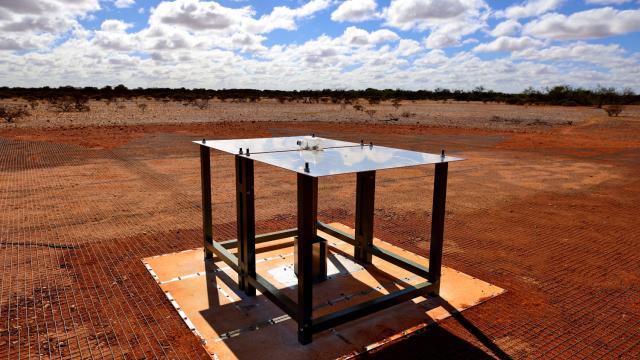At the CSIRO’s Radio-Quiet Zone on Wajarri Yamatji country in outback Western Australia, a team of International researchers have found signals thousands of times fainter than the background radio noise.
These signals are far from common – they come from the formation of stars 13.6 billion years ago.
The universe went cold, and plunged into darkness for millions of years after the Big Bang. In this dark, cool universe, stars formed – created by gravity bringing matter together in an event called the Cosmic Dawn.
This signal that these researchers found? It’s the closest we’ve ever been to that moment. And discovering it wasn’t easy – it fell in the region of the spectrum used by FM radio stations. Most places on Earth would never have been able to detect it.
“Finding this miniscule signal has opened a new window on the early universe,” lead author Dr Judd Bowman said.
Dr Bowman has been running his Experiment to Detect the Global Epoch of Reionisation Signature for 12 years. Nine years ago he started doing the observations from CSIRO’s Murchison Radio-astronomy Observatory, after searching for the best place on the planet for this work.
You see, the MRO observatory is in a naturally extremely “radio-quiet” location. There is a legislated “radio quiet” zone up to 260 km across, keeping human-made activities that produce interfering radio signals to an absolute minimum.
The MRO’s development was managed by Antony Schinckel, CSIRO’s Head of Square Kilometre Array Construction and Planning.
“Finding this signal is an absolute triumph, a triumph made possible by the extreme attention to detail by Judd’s team, combined with the exceptional radio quietness of the CSIRO site,” Schinckel said.
“We worked hard to select this site for the long-term future of radio astronomy after exhaustive investigations across the country. We believe we have the gold standard in radio quietness, the best site in the world.”
Schinckel noted the experiment was extremely difficult.
“This is one of the most technically challenging radio astronomy experiments ever attempted. The lead authors include two of the best radio astronomy experimentalists in the world and they have gone to great lengths to design and calibrate their equipment in order to have convincing evidence for a real signal,” Schinckel said.
Dr Bowman praised the support he had received from CSIRO.
“We wouldn’t have a detection from EDGES to report without the support of CSIRO,” Dr Bowman said.
“The infrastructure and logistical support that CSIRO has provided for EDGES has enabled our small team to focus on developing the new instrumentation and techniques needed for the experiment.”
Dr Bowman called CSIRO’s operations team at the MRO has been “phenomenal”.
“They have helped to install the experiment and maintain it between our visits to the site. Their expertise has been invaluable, they helped us learn how to operate in the Outback environment,” Dr Bowman said.
The MRO was developed by CSIRO for its Australian Square Kilometre Array Pathfinder telescope and also hosts a low-frequency telescope, the Murchison Widefield Array, built by Curtin University.
These telescopes make use of the radio-quiet nature of the site and also are important precursors to the Square Kilometre Array itself. It is now the Australian site for the low-frequency telescope of the future Square Kilometre Array, SKA1 Low.
